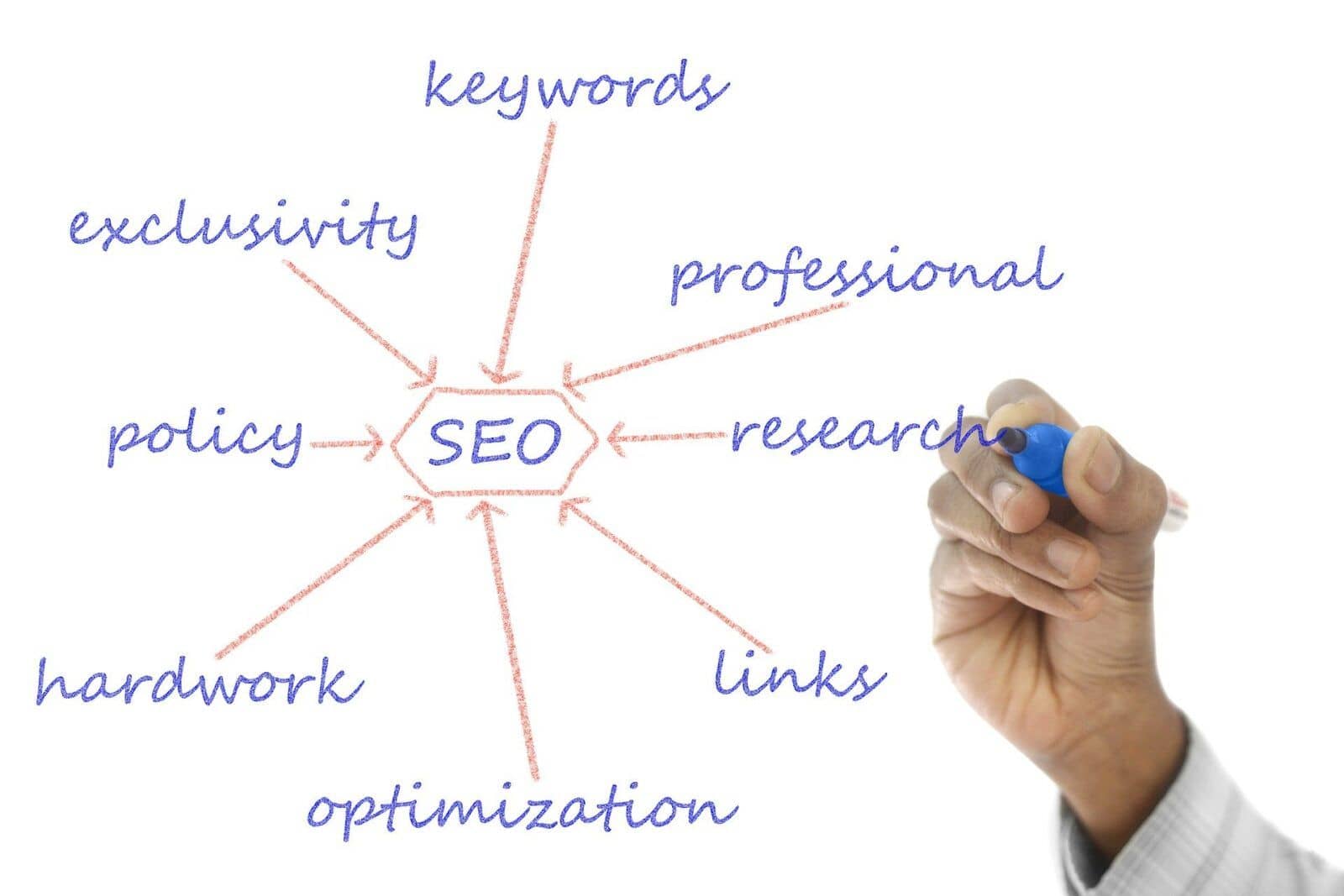The marketing landscape is always changing, making it feel like the moment you master a strategy, it’s already obsolete. But what if you could harness the power of automation to stay ahead of the curve? Instead of constantly chasing your tail, imagine a marketing machine, humming quietly in the background, generating leads and nurturing relationships while you focus on what truly matters: strategy and innovation. In this article, we delve into 10 powerful growth hacks that leverage the potential of marketing automation, transforming your efforts from reactive to radically effective.
Table of Contents
- Leveraging AI for Personalized Marketing Strategies
- Harnessing the Power of Chatbots for Customer Engagement
- Streamlining Social Media Management with Automation Tools
- Optimizing Email Campaigns through Automated Workflows
- Unleashing the Potential of Marketing Automation Platforms
- Maximizing ROI with Data-Driven Marketing Decisions
- Amplifying Content Reach through Automated Distribution Channels
- Supercharging Lead Generation with Automated Lead Scoring
- Elevating Customer Experience with Automated Onboarding Processes
- Boosting Conversion Rates through Automated Retargeting Campaigns
- FAQs
- To Wrap It Up
Leveraging AI for Personalized Marketing Strategies
In the digital age, one-size-fits-all marketing approaches are rapidly becoming obsolete. With the advent of Artificial Intelligence (AI), marketers can now craft highly targeted campaigns that resonate with individual customers on a deeper level. By employing AI-driven tools, businesses can analyze vast amounts of customer data, including browsing habits, purchasing patterns, and social media interactions. This valuable information enables the creation of tailored marketing strategies that boost customer engagement and drive conversions.
AI-Powered Personalization Techniques:
- Customer Segmentation: Grouping customers based on shared characteristics, behaviors, or preferences.
- Content Recommendation: Serving personalized content recommendations to customers based on their past interactions.
- Dynamic Messaging: Crafting tailored messages that address the unique needs and interests of individual customers.
Businesses that successfully implement AI-driven personalized marketing strategies often exhibit significant improvements in customer satisfaction and loyalty. The table below highlights the benefits of AI-powered personalization in marketing.
| Metric | Pre-AI Implementation | Post-AI Implementation |
|---|---|---|
| Customer Engagement Rate | 15% | 30% |
| Conversion Rate | 2% | 5% |
| Customer Retention Rate | 20% | 35% |
Harnessing the Power of Chatbots for Customer Engagement
Chatbots have revolutionized the way businesses interact with their customers. By integrating artificial intelligence and machine learning, these virtual assistants can automate tasks, provide 24/7 support, and help companies collect valuable data. With their capabilities continuing to expand, chatbots are becoming a crucial tool for businesses looking to stay ahead of the competition and provide top-notch customer experiences. Some of the key benefits of using chatbots for customer engagement include: * Personalized interactions: Chatbots can be programmed to address customers by name, offer them tailored solutions, and even make product recommendations based on their purchase history. * Efficient issue resolution: Chatbots can quickly resolve simple issues, freeing up human customer support agents to focus on more complex problems. * Data collection and analysis: Chatbots can gather valuable data on customer behavior, preferences, and pain points, which can be used to inform marketing strategies and improve the overall customer experience.
| Chatbot Benefits | Results |
|---|---|
| Increased response rate | Up to 70% higher than traditional email marketing |
| Improved customer satisfaction | Average rating of 4.5/5 for chatbot-based support |
| Reduced support costs | Up to 30% lower than traditional customer support |
Streamlining Social Media Management with Automation Tools
Managing multiple social media accounts can be a daunting task, especially for small businesses or solo entrepreneurs. From crafting engaging content to scheduling posts and tracking engagement, social media management can quickly consume a significant portion of your time. However, by leveraging automation tools, you can streamline your social media management and free up more time to focus on high-level strategy and creativity. Benefits of Automation
- Reduced time spent on manual posting and scheduling Increased productivity and efficiency
- Better consistency and uniformity across all accounts Improved brand image and recognition
- Enhanced ability to track and analyze performance Data-driven decision making
One effective way to automate social media management is by using scheduling tools. These tools allow you to plan and schedule your posts in advance, saving you time and ensuring consistency. Some popular scheduling tools include Hootsuite, Buffer, and Sprout Social. For WordPress users, there are also several plugins available that can help streamline social media management, such as Social Warfare and CoSchedule.
| Tool | Features | Pricing |
|---|---|---|
| Hootsuite | Scheduling, analytics, content curation | Free - $599/month |
| Buffer | Scheduling, analytics, team collaboration | Free – $300/month |
| Social Warfare | Scheduling, analytics, mobile optimization | $4.50 – $9/month |
Another key aspect of automation is tracking and analyzing performance. By using tools like Google Analytics and Facebook Insights, you can gain valuable insights into your audience’s behavior and preferences. This information can then be used to refine your social media strategy and make data-driven decisions.
Optimizing Email Campaigns through Automated Workflows
Automating repetitive tasks in email marketing can significantly boost efficiency and productivity. By streamlining workflows, marketers can focus on crafting compelling content and building meaningful relationships with their audience. One effective way to achieve this is by leveraging marketing automation tools that enable the creation of dynamic workflows.
Key Benefits of Automated Email Workflows
| Increased Efficiency | Automation eliminates the need for manual task execution, freeing up time for strategic planning and creative work. |
| Enhanced Personalization | Automated workflows enable tailored messaging and offers, enhancing the overall customer experience. |
| Improved Data Analysis | Automation facilitates the collection and analysis of valuable insights, empowering data-driven decision-making. |
Furthermore, automated workflows can be designed to adapt to various customer behaviors and preferences, ensuring timely and relevant interactions. By harnessing these capabilities, marketers can foster deeper connections with their audience and drive business growth.
Actionable Tips for Setting Up Automated Email Workflows
- Define clear goals and objectives for each workflow
- Segment your audience based on demographics, behavior, or preferences
- Use a combination of triggers, conditions, and actions to create dynamic workflows
- Monitor and optimize workflows regularly to ensure peak performance
By implementing these strategies, marketers can unlock the full potential of automated email workflows and drive meaningful engagement with their audience.

Unleashing the Potential of Marketing Automation Platforms
Unlocking Efficient Marketing Strategies Marketing automation platforms have revolutionized the way businesses approach their marketing efforts. By automating repetitive tasks and streamlining processes, businesses can save time and allocate resources to more strategic initiatives. With the right platform in place, marketers can focus on high-leverage activities such as creating engaging content, building relationships with customers, and analyzing results to inform future decisions. By leveraging automation, businesses can increase productivity, reduce costs, and drive revenue growth. Key Benefits of Marketing Automation Platforms • Personalization: Deliver tailored experiences to customers based on their behavior, preferences, and demographics. • Lead Management: Automate lead scoring, nurturing, and qualification to ensure that sales teams are focused on high-potential opportunities. • Omnichannel Engagement: Engage with customers across multiple channels, including email, social media, and mobile, to provide a seamless experience. • Data-Driven Insights: Gain visibility into customer behavior and campaign performance to inform future marketing decisions.
| Marketing Automation Feature | Description |
|---|---|
| Email Marketing | Automate email campaigns to nurture leads and build customer relationships. |
| Lead Scoring | Assign scores to leads based on behavior, demographics, and firmographic data. |
| Customer Segmentation | Segment customers based on behavior, preferences, and demographics to deliver targeted experiences. |
By leveraging these features and benefits, businesses can unlock the full potential of their marketing automation platforms and drive revenue growth, improve customer satisfaction, and gain a competitive edge in their respective markets.

Maximizing ROI with Data-Driven Marketing Decisions
Unlocking the Power of Data In today’s data-driven marketing landscape, having access to the right insights can mean the difference between making informed decisions and shooting in the dark. By leveraging key performance indicators (KPIs) and metrics, marketers can create targeted campaigns that resonate with their audience and drive meaningful results. Some essential data points to track include:
- Conversion rates and customer lifetime value (CLV)
- Return on ad spend (ROAS) and customer acquisition cost (CAC)
- Open rates, click-through rates (CTR), and bounce rates
- Social media engagement metrics, such as likes, shares, and comments
Putting Data into Action Once you’ve collected the necessary data, it’s time to start making decisions. This might involve A/B testing different ad creatives or audience segments, adjusting your budget allocations based on performance, or even shifting your marketing strategy entirely. Consider the following tactics for getting the most out of your marketing spend:
- Use lookalike targeting to reach new audiences with similar characteristics
- Leverage retargeting ads to re-engage users who have abandoned their carts
- Utilize account-based marketing to target key decision-makers at large accounts
- Run social media contests or giveaways to drive engagement and brand awareness
Measuring Success As you implement these tactics, it’s essential to continuously monitor and evaluate their effectiveness. This might involve creating a dashboard or spreadsheet to track key metrics, setting up regular reporting and analysis, or even using tools like Google Tag Manager to streamline your data collection. Take a look at the example below for an idea of what a simple marketing ROI dashboard might look like:
| Marketing Channel | Cost | Conversions | Revenue | ROI |
|---|---|---|---|---|
| Facebook Ads | $1,000 | 50 | $5,000 | 400% |
| Google Ads | $1,500 | 75 | $7,500 | 400% |
| Email Marketing | $500 | 20 | $2,000 | 300% |
Amplifying Content Reach through Automated Distribution Channels
Automated distribution channels can significantly expand the reach of your content, saving you time and resources in the process. One key strategy is to leverage social media, using tools like Hootsuite or Buffer to schedule and publish posts across multiple platforms. By automating this process, you can maintain a consistent social media presence, engage with your audience, and drive traffic to your website.
| Automated Distribution Channels | Benefits |
|---|---|
| Social media scheduling tools | Increased brand awareness, improved engagement, and website traffic |
| Email newsletters | Targeted communication, lead nurturing, and conversion optimization |
| Content aggregators | Broader audience reach, improved credibility, and SEO benefits |
Some additional ideas for automated distribution include:
- Repurposing blog posts into email newsletters or video content to reach different segments of your audience.
- Using content aggregators like Medium or LinkedIn Pulse to expand your reach and build thought leadership.
- Leveraging user-generated content (UGC) campaigns to encourage customers to share their experiences with your brand.
Supercharging Lead Generation with Automated Lead Scoring
Imagine having a system that automatically qualifies your leads, allowing your sales team to focus on the most promising prospects. This is exactly what automated lead scoring can do for your business. By assigning points to leads based on their behavior, demographics, and other criteria, you can identify high-quality leads and nurture them through the sales funnel.
So, how does automated lead scoring work? It typically involves setting up a system that tracks lead interactions with your website, social media, and email marketing campaigns. Leads earn points for each interaction, and when they reach a certain threshold, they’re qualified as “hot” leads. Here are some examples of how you can use behavior-based scoring:
- Downloaded an e-book: 10 points
- Attended a webinar: 20 points
- Visited the pricing page: 30 points
- Opened an email: 5 points
- Clicked on a link: 10 points
By using automated lead scoring, you can:
| Boost conversion rates | By focusing on high-quality leads, you can increase the chances of conversion. |
| Save time and resources | Automated lead scoring eliminates manual lead qualification, freeing up time for more strategic activities. |
| Enhance the customer experience | By personalizing your approach to each lead, you can build trust and increase the chances of a sale. |
Elevating Customer Experience with Automated Onboarding Processes
Streamlining Onboarding with Automation Manual onboarding processes can lead to frustration and disengagement among new customers. By automating onboarding, businesses can create a seamless and personalized experience that sets the tone for a long-term relationship. Here are some key benefits of automated onboarding: Reduced manual effort and errors Faster time-to-value for customers * Improved customer satisfaction and retention
| Automation Stage | Task | Goals |
|---|---|---|
| Initial Contact | Send welcome email with getting started guide | Set expectations, provide context |
| Setup and Configuration | Guide customers through setup and configuration | Minimize friction, maximize adoption |
| Ongoing Support | Offer proactive support and training resources | Foster growth, address pain points |
By automating the onboarding process, businesses can also gather valuable insights into customer behavior and preferences. This information can be used to refine and personalize the experience, further enhancing engagement and loyalty. Additionally, automated onboarding can help identify areas for improvement in the product or service, driving innovation and growth.

Boosting Conversion Rates through Automated Retargeting Campaigns
Implementing an automated retargeting campaign can significantly enhance your overall conversion rates. This growth hack allows you to reconnect with potential customers who have interacted with your brand but failed to make a purchase. By targeting users who have abandoned their shopping carts or visited your website, you can stay top of mind and encourage them to complete their purchase.
The key to an effective retargeting campaign lies in its segmentation. You should aim to personalize your message and tailor it to the user’s specific interests and needs. Consider segmenting your audience based on:
- Browsing behavior: Target users who have visited your website but failed to make a purchase.
- Abandoned cart activity: Focus on users who have left items in their shopping carts.
- Search history: Target users who have searched for specific keywords related to your product or service.
When creating your retargeting campaign, consider the following ad formats and channels:
| Ad Format | Channels |
| Display ads | Google Ads, social media, native advertising |
| Email marketing | Targeted email campaigns, newsletters, promotional emails |
| Videos ads | YouTube, social media, streaming services |
FAQs
Q1: What is marketing automation, and how can it help businesses grow? A1: Marketing automation refers to the use of software and technologies to automate repetitive marketing tasks, streamline workflows, and optimize campaigns. By automating processes such as email marketing, social media management, and lead nurturing, businesses can save time, reduce human error, and deliver more personalized experiences to their target audience. This ultimately leads to increased efficiency, better customer engagement, and faster business growth. Q2: Can you share some growth hacks that involve marketing automation? A2: Certainly! Here are a few growth hacks that leverage marketing automation:
- Automated email sequences: Set up a series of automated emails to nurture leads and guide them through the customer journey.
- Social media scheduling: Use tools to schedule and automate social media posts, ensuring consistent content delivery and saving time.
- Chatbots: Implement AI-powered chatbots on your website to provide instant customer support and gather valuable lead information.
- Personalized content: Use automation to deliver personalized content and product recommendations based on user behavior and preferences.
- Abandoned cart recovery: Automate reminders and incentives for customers who have left items in their online shopping carts, encouraging them to complete their purchases.
Q3: How can businesses ensure that their automated marketing efforts don’t feel impersonal or robotic? A3: While automation can be incredibly efficient, it’s essential to maintain a human touch in your marketing efforts. Here are some tips to ensure your automated marketing feels personal:
- Segment your audience: Divide your target audience into smaller segments based on shared characteristics, allowing for more targeted and relevant messaging.
- Use personalization tokens: Incorporate personalization tokens, such as the recipient’s name or location, in your automated emails and content to create a more individualized experience.
- Monitor and adjust: Regularly review and analyze the performance of your automated campaigns, making adjustments as needed to improve personalization and effectiveness.
- Combine automation with human interaction: Integrate automated processes with opportunities for real human engagement, such as live chat support or personalized follow-ups.
Q4: What are some best practices for implementing marketing automation? A4: To make the most of marketing automation, consider these best practices:
- Define your goals: Clearly outline your marketing objectives and ensure that your automation efforts align with these goals.
- Choose the right tools: Select marketing automation software that meets your specific needs, budget, and level of expertise.
- Prioritize data quality: Ensure that your customer data is accurate, up-to-date, and properly segmented for targeted automation.
- Test and optimize: Continuously test and refine your automated campaigns to improve their performance and effectiveness.
- Measure success: Track key metrics and KPIs to evaluate the success of your marketing automation efforts and make data-driven decisions.
To Wrap It Up
As we conclude our journey through the realm of automated marketing, remember that the true power lies not in the tools themselves, but in the creativity and strategy you bring to the table. These 10 growth hacks are merely the keys to unlock the full potential of your marketing arsenal. Now it’s your turn to take the reins, harness the technology, and watch your brand soar to unprecedented heights.



